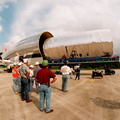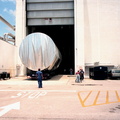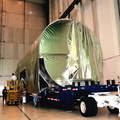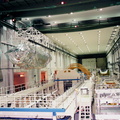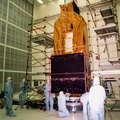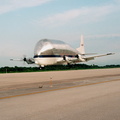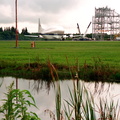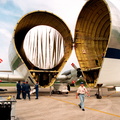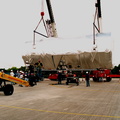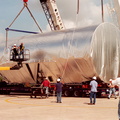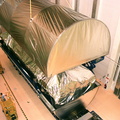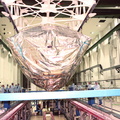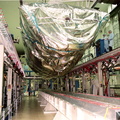
WIKIARCHIVES.SPACE
The Human Spaceflight Archive

Information
- Taken in
- Kennedy Space Center
- Höfundur
- NASA
- Lýsing
- At Hangar AE, Cape Canaveral Air Station (CCAS), workers move a solar panel toward NASA's Far Ultraviolet Spectroscopic Explorer (FUSE) satellite before attaching it. FUSE was developed by The Johns Hopkins University under contract to Goddard Space Flight Center, Greenbelt, Md., to investigate the origin and evolution of the lightest elements in the universe - hydrogen and deuterium. In addition, the FUSE satellite will examine the forces and process involved in the evolution of the galaxies, stars and planetary systems by investigating light in the far ultraviolet portion of the electromagnetic spectrum. FUSE is targeted for launch June 23 from Launch Pad 17A, CCAS, aboard a Boeing Delta II rocket.
- Stofnað á
- Laugardagur 12 Júní 1999
- Source link
- https://science.ksc.nasa.gov/gallery/photos/1999/
- Heimsóknir
- 29
- Einkunnastig
- engin einkunn
- Gefa þessari mynd einkunn
- License
- CC BY-NC-ND
- Modified by WikiArchives
- No (original)
- Sótt
- 1
Keyrt af Piwigo
